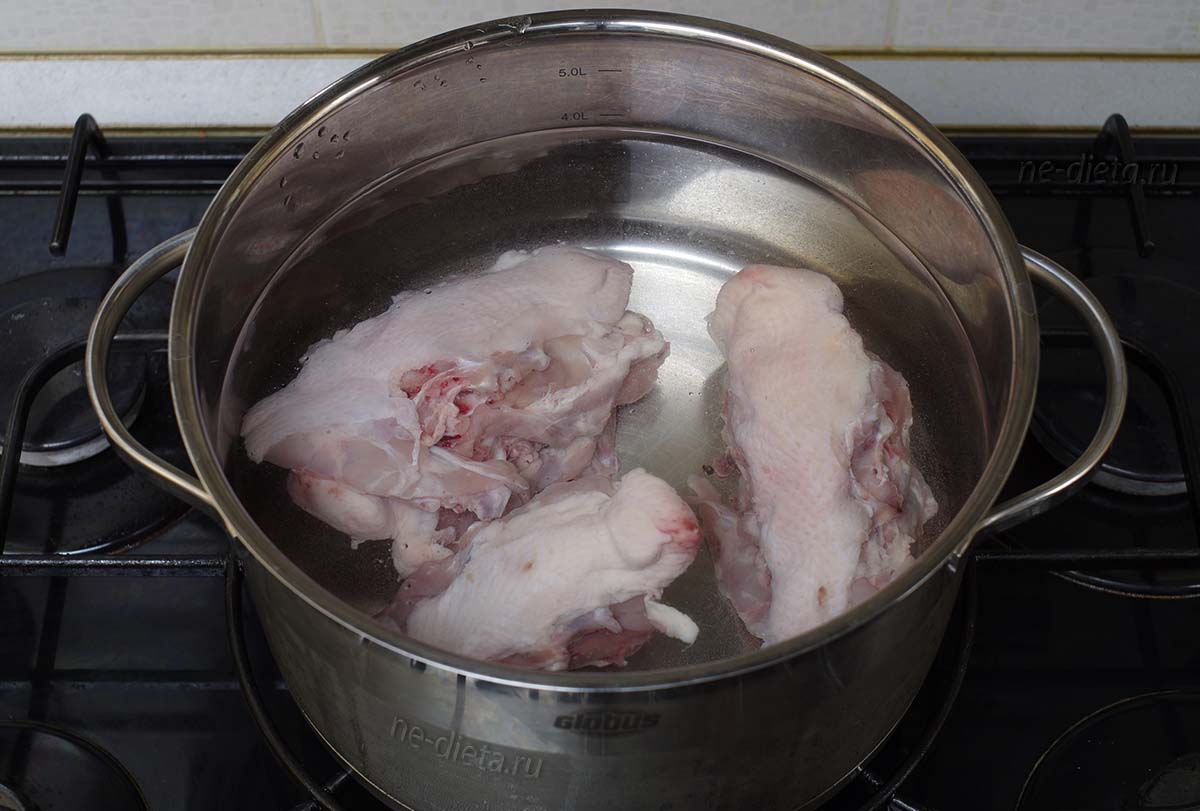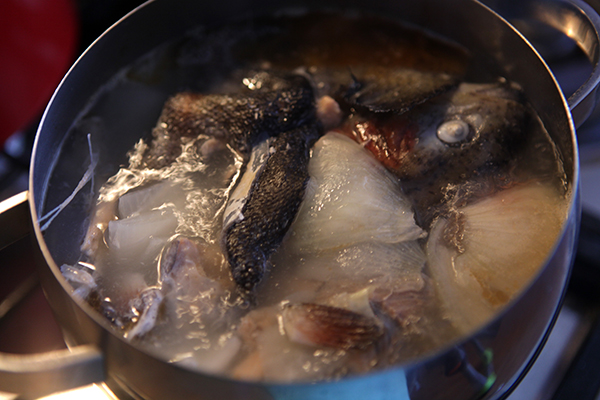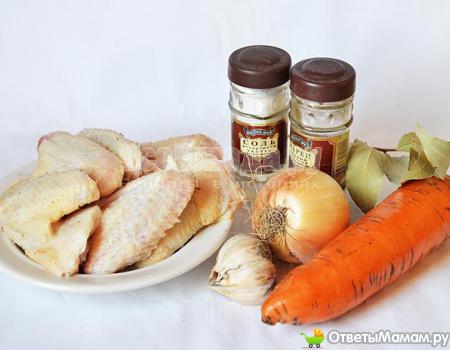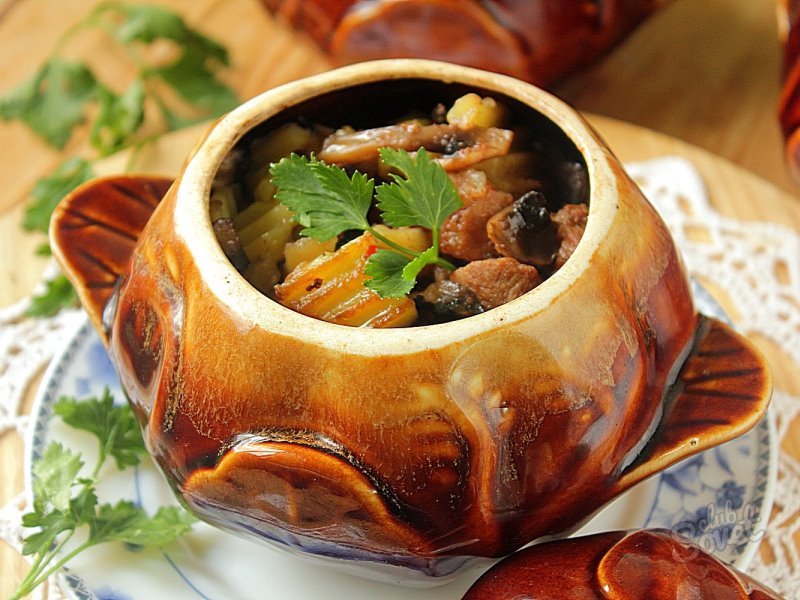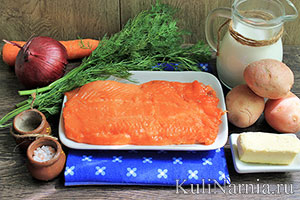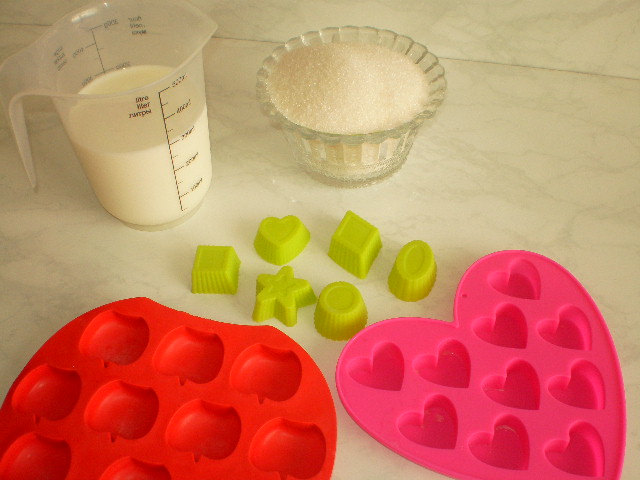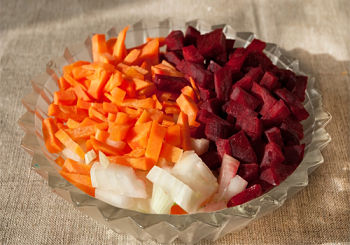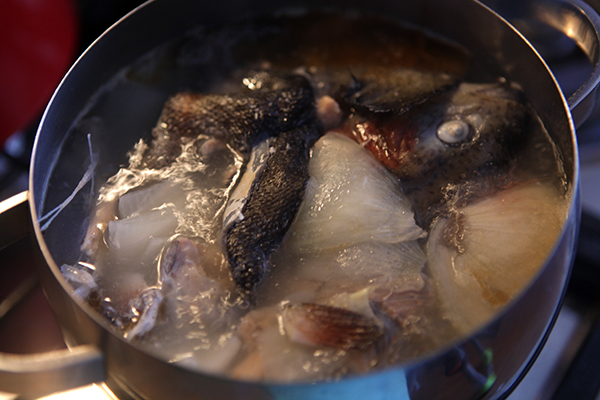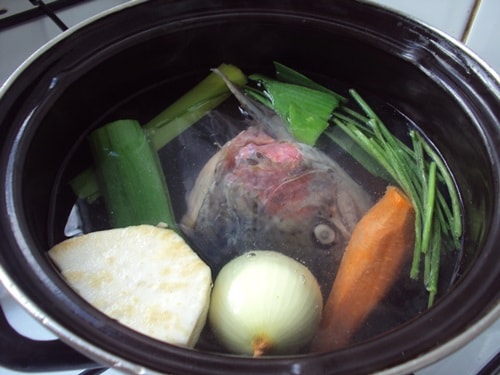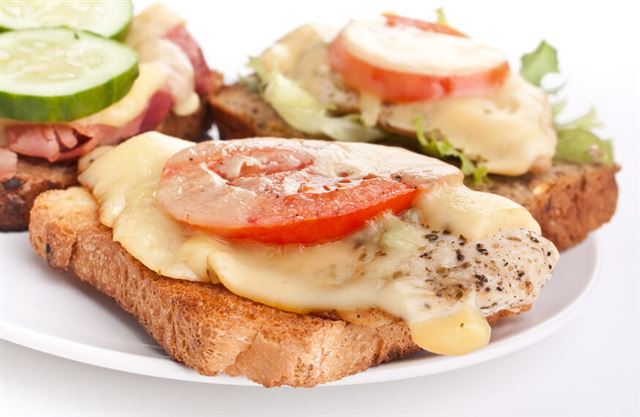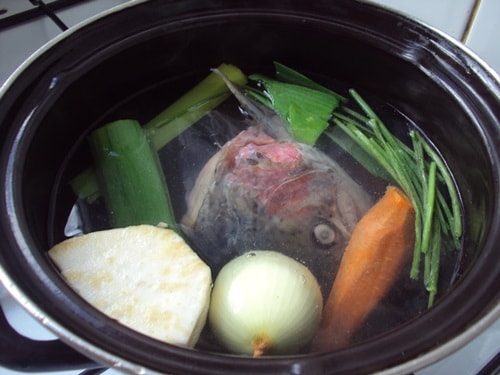Chicken broth after surgery. Broth with greens and egg
An amazing dish that has the long-standing glory of a natural medicine. It restores the strength of patients, helps in rehabilitation after operations, helps fight colds and viral diseases. Fresh home-made broth will improve bronchial patency and thin out sputum, enhance stomach function during indigestion, ease the condition of patients with gastritis with high acidity, and normalize heart rate.
There is a lot of protein in the broth - more than in meat. Chicken broth contains B vitamins that regulate the nervous system, fat metabolism and stimulate hematopoiesis, as well as polyunsaturated fatty acids that protect against hypertension, heart attacks and strokes. The broth also contains easily digestible iron, copper, selenium, calcium and magnesium. In people with excess hemoglobin, the broth dilutes the blood.
To properly prepare this delicious and such a healing dish, you need to follow a few simple recommendations.
First of all, choose the type of dish you want. If you want to get rich and strong broth, take the whole gutted. The more transparent the broth you want, the less meat should be in it. The most transparent, dietary broth is boiled only from bones.
If you cook the broth from a whole chicken, then, depending on the size of the pan and your desire, you can cook it whole or cut it into pieces - this will not affect the taste of the dish.
Dip the washed meat in a pan, wait for the boil and drain the first broth - the chemicals that, unfortunately, are now found in almost any product will pass into it: they enter the chicken body with food. Wash the chicken again and rinse the pan. Again, fill the chicken with water and cook on the smallest fire, after a while add the vegetables - (right in the husk), whole or halved carrots, greens. Do not add too aromatic spices: allspice, etc. Cook the broth for two hours. If you do not want it to turn out to be bold, remove the allocated fat with a spoon. At the end of cooking, put a bay leaf.
Remove all meat, bones and vegetables from the finished broth. Strain the broth - and you can eat it (or drink, depending on your preference). Add raw, greens and carrot slices to the broth, if desired.
A more transparent broth is cooked in the same way, but only bones without meat or with its leftovers and chicken offal are used for cooking. You can buy a special soup set - it includes what remains after cutting the chicken carcass on the fillet. Cooking such a broth requires less than from a whole carcass: about an hour and a half.

The most transparent and light broth is cooked only from bones. It is enough to cook it for only one hour.
You can not add any vegetables to the broth, but cook it only from chicken. It will be almost as tasty, although with a not so rich aroma.
Finally, we will give you some tips for using chicken broth. It can be used to make soups, gravy and sauces, add a little when cooking rice or buckwheat. The broth will add aroma and juiciness to stews - add a little to meat or poultry, and the result will delight you very much.
The broth can be stored for a long time if it is poured into a plastic container or plastic bag and placed in the freezer. It will be enough for you to defrost the broth when you want it, and then use it as usual.
Stay with the Home Guru and you will learn all the secrets of delicious, healthy and simple dishes that can be prepared from chicken.
After surgery, the diet should be as sparing as possible for the digestive system, and at the same time, provide the weakened body with all the necessary nutrients. After surgery, the patient needs complete rest - the body needs strength for further recovery and normal functioning.
What should be the diet after surgery?
The diet after surgery depends, first of all, on what organs the surgery was performed on. On the basis of this, the entire further diet and diet of the patient are built.
However, there are general rules for postoperative nutrition, taking into account the functioning of the body of the operated patients (weakness of the gastrointestinal tract, increased need for proteins, vitamins and trace elements). These recommendations are basic and are used for all diets after surgery:
- Sparing food. Due to the fact that after operations, the load on the digestive organs is undesirable (and, in many cases, impossible), the dishes should be liquid, semi-liquid, jelly-like or creamy-grated consistency, especially on the second or third day after surgery. Eating solid foods is contraindicated;
- The first day after surgery, only drinking is recommended: mineral water without gas, ordinary boiled water;
- As the patient recovers, the diet of the diet after surgery expands - more dense foods are introduced and some foods are added.
Diet after surgery for the first 3 days
What should be the diet in the first few days after surgery? Let us dwell on this issue in more detail, since nutrition in the first postoperative period has the greatest difficulty.
After surgery, the patient’s diet for the first 2-3 days consists only of liquid or grated dishes. The food temperature is optimal - not higher than 45 ° C. The patient is given food 7-8 times a day.
There are clear medical prescriptions for eating: what is possible and what is not possible with a diet after surgery is indicated in them quite accurately.
What is possible with a diet after surgery (first few days):
- Diluted lean meat broths;
- Mucous decoctions with the addition of cream;
- Rice broth with butter;
- Rosehip broth with honey or sugar;
- Fruit strained compotes;
- Diluted juices 1: 3 in a third of a glass for one meal;
- Liquid jelly;
- On the third day, one soft-boiled egg can be introduced into the diet after surgery.
What is impossible with a diet after surgery:
The diet after surgery excludes carbonated drinks, whole milk, sour cream, grape juice, vegetable juices, rough and solid foods.
An example of a diet menu after surgery for the first 3 days
- Warm tea with sugar - 100ml, sparse berry jelly - 100g;
Every two hours:
- Strained apple compote - 150-200ml;
- Low-fat meat broth - 200g;
- Rosehip broth - 150ml, jelly - 120g;
- Warm tea with sugar and lemon - 150-200ml;
- Mucous cereal broth with cream - 150-180ml, fruit jelly - 150g;
- Rosehip broth - 180-200ml;
- Strained compote - 180ml.
After the initial sparing diet after surgery, a transitional restorative nutrition is prescribed, aimed at a gradual transition to a complete diet.
What can and cannot be in the diet after surgery on days 4,5 and 6
After the first three postoperative days, liquid or mashed cereals from buckwheat, rice or oatmeal are introduced into the diet. It is allowed to use cereal mucous soups and meat broths with the addition of semolina, steam omelettes. You can expand the diet with meat or fish steamed soufflé, sweet mousse and milk cream.
It is forbidden to eat too dense and dry food, as well as fresh fruits and vegetables (due to the high fiber content that stimulates the contraction of the stomach).
In the following days and until the end of the recovery period, steam dishes from cottage cheese, baked apples, fruit and vegetable purees, fermented milk products (kefir, fermented baked milk) are added to the diet menu after the operation.
Diet after appendicitis
The recovery period after appendicitis surgery is about two weeks. All this time, you should adhere to a special diet, which in the first days will help the body recover and gain strength, and in the following it will allow you to fully eat without the load on a weakened gastrointestinal tract.
In the first 12 hours after surgery, eating is prohibited, but appetite at this time is usually absent. Further, for 3-4 days, the diet after appendicitis recommends eating the following dishes:
- Non-greasy broths;
- Rosehip broth with sugar;
- Black tea with sugar;
- Rice broth;
- Jelly, diluted 1: 2 fruit juices, jelly.
A diet after appendicitis prescribes to abandon whole milk and any solid foods in the first 3 days.
On the 4th day of the diet after the operation to remove the appendix, fresh soft fruits (bananas, peaches, grapes, persimmons) and vegetables (tomato, cucumber) are introduced into the diet. To replenish a weakened body with protein, steam dishes are prepared from cottage cheese (souffle, casseroles), boiled meat and fish. It is useful to introduce fermented milk products (kefir, fermented baked milk, yogurt), boiled or stewed vegetables (zucchini, cabbage, eggplant), butter, low-fat cream into the diet after appendicitis.
Products that are contraindicated in the diet after appendicitis:
- Sparkling mineral and sweet water;
- Rich meat broths;
- Dough products, white bread;
- Canned food and smoked meats;
- Spicy spices and seasonings;
- Cakes, cookies, sweets.
The diet after the operation is based on the principle of fractional nutrition - you need to eat often, in small portions. You can not drink food with water or tea, you need to wait an hour and a half, so that the food starts to be absorbed and does not stick together in a lump from the incoming liquid.
Important points of the diet after surgery
During surgery on the esophagus or other organs of the gastrointestinal tract in the first 2-3 days, it is forbidden to eat food through the mouth - feeding is carried out by means of a probe. Further, the diet after surgery goes according to the usual scenario.
A frequent problem after surgery is the difficulty in naturally emptying the intestines. Constipation can be caused by postoperative adhesions or scars, weak stomach activity after an abundance of rubbed dishes, and general weakness of the body.
In this case, products that enhance intestinal motility (if there is no doctor’s ban) should be introduced into the diet menu after surgery: kefir, softened prunes, grated raw carrots and an apple.
Popular articles Read more articles
 02.12.2013
02.12.2013
We all walk a lot during the day. Even if we have a sedentary lifestyle, we still walk - because we do not ...
605139 65 Read more
After large surgeries on the abdominal organs, they usually refrain from administering food to the patient for 24-36 hours. However, a longer fasting is unacceptable, as it not only depletes the patient, but also supports postoperative acidosis, suppresses gastric and intestinal motility, and predisposes to various complications.
In the postoperative period, the surgeon individually, depending on the nature of the surgical intervention and the patient's condition, determines the necessary diet, meal time and further expansion of the diet. As before the operation, in the postoperative period, great attention is paid to the introduction in sufficient quantities of liquid, salt and carbohydrates, in the following days - proteins and vitamins.
After resection of the stomach, hunger is prescribed for 36-48 hours. When dry mouth is allowed to rinse your mouth or wipe with a wet swab the mouth. The body's need for fluids and salts is satisfied by intravenous administration of saline and 5% glucose solution.
On the 2nd day, the attending physician may allow one glass of sweet tea, which is given in a teaspoon in 15-20 minutes during the day.
On the 3rd day, the patient receives two glasses of liquid (low-fat, weak broth and sweet tea) also in separate sips during the day.
On the 4-5th day, they allow broth or slimy soup, jelly, jelly, sweet tea, fruit or berry juices, diluted with sweet warm water (diet 0).
On the 6-7-8th day, a surgical diet 1 is prescribed, which consists of the following products and dishes: 100 g of whole-day white bread crumbs, liquid semolina porridge or rice or buckwheat porridge cooked in water with the addition of a small quantities of milk and butter, broth or slimy soup, meat steamer soufflé or meat puree, steam omelette, soft-boiled eggs, butter, kefir, jelly, jelly, dogrose infusion, sweet tea, juices from fresh berries and fruits. You need frequent meals every 2 hours, one dish should be no more than 200-250 g per reception.
On the 8th-9th day after the operation, the patient is transferred to a diet of 13. In some medical institutions, this diet is referred to as 1 surgical.
In case of total gastrectomy in the first days after the operation, Spasokukotsky nutrition is carried out: a nutritional mixture of two eggs, 400 g of milk, 50 g of sugar and 25 g of butter are introduced through the trocar into the upper part of the jejunum. On prescription, the patient is fed 2-3 times a day.
After surgery on the biliary tract in the normal course without complications, the patient is fed according to the following scheme:
- 1st day the patient does not receive food through the mouth
- on the 2nd day - sweet tea, jelly, slimy soup without butter; you can write a diet 0
- on the 3-4th-5th day, a surgical diet 1a is prescribed, with the replacement of broth by mucous soup and eggs - protein steam omelette
- from the 6th day the patient is transferred to a diet 5a
- 1st day sick fast
- Day 2 gets a diet 0
- 3-4th-5th day - surgical 1 diet followed by transfer to diet 13, 5a or 4
After gynecological or urological surgery, a surgical diet is prescribed for 2–3 days, then a diet of 13 or 5.
Appetizing, fragrant, rich or, on the contrary, dietary - any chicken stock is irreplaceable! Soups and main dishes are cooked from it, served pure with unsweetened pastries, it is recommended by nutritionists, and doctors also strongly advise.
Chicken broth: benefits and harms
The use of the broth has long been overgrown with legends, and many of them are quite true.
It is believed that properly brewed broth can lift even the most severely ill patients.
And in America in the last century, this liquid dish was even nicknamed “Jewish penicillin”, its healing power is so amazing.
Chicken broth is indispensable for poisoning (a hangover also applies), after surgery, for colds or flu, as well as for gastritis and some other gastrointestinal diseases.
It is worth introducing this dish of a nursing mother into the menu, you can also give a small child. What is the secret of his healing power? And is chicken stock really good?
Modern doctors believe that chicken broth is an excellent restorative, since all the beneficial substances contained in meat and bones (and there are many of them in chicken) go into the decoction for 60%. And any body, especially a weakened one, is much easier to get proteins, fats, carbohydrates, vitamins and minerals from liquid, easily digestible food.
 It also benefits in that it stimulates the digestive tract, stimulates appetite, and is also almost completely absorbed.
It also benefits in that it stimulates the digestive tract, stimulates appetite, and is also almost completely absorbed.
That's just not so rosy.
Chicken meat today is significantly different in chemical composition from what it was even several decades ago.
Modern chickens are fed artificial feed, the purpose of which is to make a quick profit.
Therefore, there are growth hormones there, so that the chicken gains mass faster, and antibiotics, so that the bird does not get sick and does not die.
These substances dangerous to humans accumulate in meat, and from there they pass into broth. This is the main harm of a seemingly healing dish.
How to cook chicken broth so that you get only good? There are a couple of secrets:
- drain the first water 10 minutes after boiling;
- try to buy chickens in the villages (an ordinary villager just does not have money for all these nutritional supplements).
But even if you cooked the broth correctly from chicken meat grown in the most environmentally friendly conditions, you should not give it to those who have been diagnosed with obvious liver problems, as well as people with reduced acidity of gastric juice. It is harmful in pancreatitis, especially in acute form, with a stomach ulcer.
Caution and with the nutrition of children. Many pediatricians, because of the ambiguity of benefits and harms, still argue at what point chicken stock can be given to a child. Many advise not to introduce it into the diet earlier than a year and a half.
How to choose a chicken

It all depends on your tastes:
- from the back with a tail and legs, a rich fatty broth is obtained;
- the same will come out if you take the front part with wings without a filet;
- chicken breast broth - a dish for those on a diet;
- if you need to cook a decoction with meat, then take a chicken leg;
- the back will make an excellent basis for light first courses - without excess fat, but with a rich taste.
By the way, it is better to buy not broilers, but layers - their meat, although it requires a longer cooking, but the taste and smell in the end are much brighter.
A good option and chickens, especially for baby food - they have less fat and lower the likelihood of a high content of harmful substances.
Recipes for every taste
There are actually a lot of ways to cook chicken broth. You can make the usual classic, on the basis of which soups, cabbage soup are then cooked. And you can cook one, which in itself will be an independent dish. There are also quick cooking options when time is running out, and there are special recipes, for example, a real medicinal broth. It is better to master several at once.
The most delicious chicken broth
First of all, I offer precisely this detailed recipe with tips and subtleties of cooking, the most delicious first course. 
Ready chicken broth can be used for sauces, second and first courses.
Recipe Information
- Cuisine: French
- Type of dish: first courses
- Cooking Method: Cooking
- Servings: 4
- 1 h 30 min
-
Nutritional value per 100 g:
- Calories: 40 kcal
- Fats: 2.1 g
- Protein: 5 g
- Carbohydrates: 2 g
Ingredients:
- chicken leg - 1 pc.
- carrots - 1 pc.
- onions - 1 pc.
- celery root - 80 g
- water - 1.5 l
- bay leaf - 2 pcs.
- black pepper peas - 5 pcs.
- allspice - 5 pcs.
- cloves - 2-3 pcs.
- coriander seeds - 0.5 tsp
- greens - for serving.

Cooking method:
You can use a whole gutted chicken or parts of a carcass. In this recipe I propose to buy chilled legs. Rinse the legs thoroughly in running cold water. Dip in a saucepan, about 2 liters in volume. Fill with cold water and send to a strong fire. Bring to a boil. Drain the first broth. Rinse the chicken legs and lower them back into the pan. Pour the right amount of water to cover the meat and send to the fire. Bring to a boil. Reduce burner flame and cook for about 20-30 minutes. 
In the meantime, prepare the root crops. Take celery root, carrots and onions. If desired, you can use the root of parsley, parsnip. Peel the vegetables and rinse, dry with a towel, cut into large pieces. Heat a frying pan without oil, place vegetables and fry until browned. This will give the finished soup a richer color. 
While the chicken is cooking, constantly remove the foam. 
After about 30 minutes, add the sautéed vegetables and continue simmering over low heat for about half an hour. 
Add bay leaf, black and allspice, cloves and coriander. Cook for 15-20 minutes. 
Season with salt to your taste. Cook for another 5-10 minutes and turn off the heat. 
Before serving, remove the vegetables and strain the broth. Sprinkle with chopped herbs. 
Enjoy your meal! 
Classic recipe
 How to cook chicken broth, my grandmother taught me as a child.
How to cook chicken broth, my grandmother taught me as a child.
It is this recipe that is classic.
Usually I cook a large pot and freeze part - then use it for anything.
You can, for example, cook. It is very tasty to cook the chicken meatballs in the prepared broth and serve everything with boiled egg and greens.
What you need:
- domestic chicken - 1 average
- onions - 2 pcs.
- carrots - 2 pcs.
- salt to taste.
How to cook:
- We divide the chicken (gutted, plucked) into parts - you can cook and whole chicken, if the pan allows, but then increase the cooking time by 30 minutes. Good wash
- Fill with cold water and wait for boiling. After 10 minutes, pour this water, pour new cold water.
- Immediately put a whole peeled carrot and washed but not peeled onions - onion husks will give a pleasant golden hue to the dish.
- After boiling, reduce the heat and, removing the foam, cook for 20 minutes.
- Then we throw out the vegetables, and cook the meat for another hour.
- At the end, salt, wait 5 minutes and turn it off.
- When everything has cooled, filter through a sieve or gauze. Separate the meat from the bones and either send it back to the pan, or use it for something else, for example, for something tasty.
Spices in this case are not added so as not to interrupt the clean taste and aroma of chicken. In addition, such a workpiece can be used for cooking a wide variety of foods, which has its own set of seasonings.
Chicken broth in the “Golden” multicooker
 A delicious chicken stock in a slow cooker is a recipe for those who do not have time to mess around in the kitchen for a long time.
A delicious chicken stock in a slow cooker is a recipe for those who do not have time to mess around in the kitchen for a long time.
For cooking, absolutely any device is suitable - Redmond, Panasonic.
What is needed:
- chicken back, wings - 500 g
- onion - 1 pc.
- carrots - 1 pc.
- salt to taste
- peppercorns and other spices to choose from.
How to cook
- The back and wings are well rinsed, laid in a slow cooker. We turn on the “Frying” mode and fry for 2-3 minutes on each side with the lid open. If your cartoon is non-stick, add some vegetable oil .
- We send the peeled vegetables there, cut into 2-4 pieces.
- Fill it with hot (so that there is no temperature difference that is dangerous for the inner coating of the bowl) with water ⅔ of the volume and set the "Extinguishing" mode, cover with a lid.
- After half an hour, remove the scum with a slotted spoon and continue cooking. If you have a pressure cooker, skip this step, do not forget to reduce the cooking time by half.
- After the end signal, add salt, spices and close the lid for another half hour. The first dish will get just a magical smell!
- And then, as usual, we filter it, if you need meat, separate it from the bones and send it to the liquid. Serve deliciously with or croutons.
Healing Chicken Broth
 As we already know, for those who after surgery or undergoing complex viral diseases, chicken stock is food that also treats.
As we already know, for those who after surgery or undergoing complex viral diseases, chicken stock is food that also treats.
Therefore, it is very important to properly cook chicken broth for the patient - although the recipe is simple, the time and steps should be strictly observed.
Products:
- domestic chicken - drumsticks, breast
- 1 onion
- 1 carrot
- greens - a bunch
How to weld:
- For a patient, the broth should be boiled not in the second water, but in the third. Therefore, boil for 5 minutes 2 times.
- After this, the meat is washed well, poured with fresh water, add the peeled whole vegetables and cook 20 minutes after boiling over low heat.
- Throw the onions and carrots, cook for another 30 minutes and salt just a little - excess salt is useless for the patient.
- We rinse the greens and bind them well with a thread - we need it for smell and additional nutrients. Add to the pan, and after 10 minutes we take out and discard.
- Turn off the burner, filter the liquid twice. If the patient can have meat, we separate it from the bone and send it, chopped, to the pan (it is better to pass through a meat grinder). But usually only the broth itself is carried to the hospital. It is better to drink it warm.
Noodle recipe
 Chicken broth with vermicelli (pasta, pasta, noodles) is an independent first course.
Chicken broth with vermicelli (pasta, pasta, noodles) is an independent first course.
And it turns out especially tasty if there is a lot of meat, so we take the hips or legs.
Components:
- chicken drumsticks or thighs - 4-5 pcs.
- 1 onion
- 2 carrots
- greens to taste
- spices, salt - to taste
- thin spider noodles - 200 g
Stages of cooking:
- From the hips (legs), onions and 1 carrot, we cook the broth according to one of the recipes described above (I recommend a step-by-step recipe with a photo of “The Most Delicious”).
- When the vegetables are thrown out, the liquid is filtered, we separate the meat from the seeds, cut into heavenly slices and again put in the pan.
- We also send carrots diced into cubes, salt, add spices and boil for 10 minutes.
- Pour the vermicelli. If you have homemade noodles, it will turn out even tastier! Cook for 5 minutes, throw the chopped greens on and off. After 5 minutes, chicken stock with vermicelli
- serve.
You can replace vermicelli with any cereal in the recipe - buckwheat, rice, barley. It turns out no less tasty liquid first course. Only then cook the cereal not for 5 minutes, but 15-20.
Dietary option with an egg
This option - for losing weight, that is, for those who are important to know how many calories in chicken broth, what is its nutritional value. I will say right away: 100 g not more than 20 kcal! That is, in portions - a maximum of 60 kcal.
Components:
- 2 chicken breasts on the bone
- feet - 4-5 pcs.
- 1 onion
- 1 carrot
- dill, parsley - to taste
- salt, ground pepper, bay leaf - to taste
- eggs - 2 pieces.
How to do:
- We remove the skin from the breast, cut off the excess fat. We divide it into parts.
- Paws are well washed - with them the dish will taste better, while its caloric content does not increase.
- Onions, chicken, carrots pour 2 liters of cold water, boil.
- Drain the first boiling water, and now cook for 30 minutes, removing foam with a spoon.
- We throw out vegetables, bone and legs too. Cut the fillets finely, send back and again give the broth to boil.
- Beat raw eggs with a fork and a thin stream, constantly stirring, pour into the saucepan. 2 minutes and turn off.
- Served with greens.
Secrets of the perfect chicken broth
 Properly cooked chicken broth is a fragrant clear liquid with delicious taste!
Properly cooked chicken broth is a fragrant clear liquid with delicious taste!
Taste and smell depends not only on meat - spices and vegetables also play a big role.
In addition to standard carrots and onions, you can send celery, parsley roots and leaves, bell pepper, garlic to the pan.
The most popular vegetable - potatoes - is no longer added to smell, but to taste, when you need to cook a light, nutritious soup.
The choice of spices is almost limitless; here you are guided by your own preferences. Chicken is perfectly combined with dill, turmeric, paprika, different types of pepper.
The transparency of the broth from vegetables and spices does not depend, but on the preparation and cooking of meat is quite correct. Basic rules how to cook a transparent first dish:
- use only bones and meat, no offal (especially when cooking a carcass - there are almost always lungs and kidneys on the inside of the back). You can cook chicken hearts and ventricles separately, and then add to the already prepared broth;
- how much to cook chicken broth, also plays a role - the longer, the more likely to get a turbid liquid;
- do not interfere while cooking, only remove scum (noise, foam);
- after boiling the fire should be minimal;
- put the meat in cold water.
Attention!
For transparency, it does not matter when you pickle the broth. Adding salt only affects the taste and content of nutrients. If you need to make more tasty and healthy meat, then salt it at the end, if the fat itself is at the beginning.
It’s hard to say why the soup turns out to be muddy even if all the rules are followed. You can make it transparent again either by filtering 2-3 times through several layers of gauze, or by introducing whipped chicken protein into the liquid. After that, boil and filter again. However, transparency is a purely aesthetic moment.
KBJU chicken broth: calories, proteins, fats and carbohydrates
 The nutritional value of chicken broth in many sources varies: someone insists that it is a very nutritious dish, someone claims that he even lost weight in broth, because it is so low in calories.
The nutritional value of chicken broth in many sources varies: someone insists that it is a very nutritious dish, someone claims that he even lost weight in broth, because it is so low in calories.
In fact, everyone is right - and diets for weight loss are there, and you can get better from it.
It all depends on what parts of the chicken to use and what you will add besides it.
The calorie content of the broth on the breast without skin is about 20 kcal, while the one cooked from a whole carcass has 40-50 kcal. And if you add more vermicelli to this, then the caloric content increases by another 30-40 kcal.
BJU (that is, the amount of protein, fat and carbohydrates) usually differs only in the fat content.
All about storage
It is important not only to know the secrets of cooking, but also how to store chicken broth. The easiest way to send it in the freezer, overflowing into a plastic bottle. And after 3 months you can get it and apply, for example, for kharcho or okroshka.
Another option is to freeze in ice tins. It is convenient to use cubes when you need a little broth.
But the shelf life in the refrigerator chicken broth only 2-3 days.
Useful video
Chicken broth is credited with a host of beneficial properties. It is recommended to eat for people emaciated with the disease, after surgery, as well as children. This is a diet product that is easily digested and nourishes a depleted organism. And how to cook chicken broth for the patient, the step-by-step recipe for this we will present right now on this page "Popularly about health."
What chicken is suitable for broth?
To cook a healthy broth from chicken meat, you need to choose the right basis for it - the chicken carcass. Well, if it is a young individual - chicken. It contains almost no cholesterol, its meat is soft and soft. Such gain from a young chicken will be especially useful for children and people with diseases of the intestines and stomach. If the chicken was not found, you can cook the broth from any chicken, only then increase the cooking time. Home chicken is undoubtedly the best choice, as it does not contain harmful substances and hormones, it feeds exclusively on natural food, it grows in natural conditions.
For the patient, the broth should not be too fat - this is the main rule. Especially if it is prepared for those who have recently had surgery. Fatty food in this case is contraindicated. Properly use for cooking diet meat - chicken breast or wings. Then the gain will turn out to be nutritious, fragrant, but light, and this is the most important thing.
What else is put in the broth for the patient during cooking?
To chicken fat was even more useful, it is customary to add vegetables. The most commonly used onions, carrots, garlic, celery roots and parsley. All of these components are needed not only to impart taste and aroma, but also to enhance the fortification of the product. For colds, it is good to drink chicken broth with onions, garlic and greens. When cooking vegetables emit useful substances that the body gratefully assimilates, then recovery comes faster.
Cooking chicken broth - recipe step by step to help you:
So, if you bought a young poultry, then you can start cooking. In addition to meat, we will need more and other products.
Ingredients: chicken breast or wings - about 600 g; bottled water - 2 liters; salt; onion head; carrots - 1; garlic - 2 cloves; parsley root; celery root; greens - dill, parsley.
Broth recipe itself:
1. Remove the skin from the meat, rinse it and put it in the pan.
2. Add cold purified water.
3. We put on the stove, set the average intensity of the fire.
4. Bring to a boil.
5. Reduce the fire to a minimum, gently skimmer remove the resulting foam.
6. Cook under the lid for half an hour.
7. While the broth is languishing, clean and wash the vegetables and rhizomes.
8. Cut the carrots into cubes.
9. Onions leave entirely.
10. Celery and parsley roots are divided into several parts.
11. Cut the garlic into pieces.
12. Add all the vegetables and roots to the broth.
13. Cook for another 20-25 minutes, add salt.
14. Turn off the finished dish, leave it under the lid for another 15 minutes to infuse.
15. Serve warm, adding fresh greens.
Follow the recipe exactly if you give broth to a sick person with the flu or a cold, or to a person who has fatigue. This fat will also benefit those who suffer from a severe hangover. In this case, you should overpower yourself and drink at least 100 ml of broth, and in 2-3 hours another portion.
However, if you are cooking for those who underwent an operation on internal organs a few days ago, do not add greens and garlic yet, and put the whole carrot. Garlic is able to increase flatulence in the intestines, so it is not recommended to eat it in the postoperative period.
Useful properties of chicken broth
What this diet product is useful? Why is it indispensable during illness? When cooked for a long time, chicken meat produces valuable amino acids, peptides and unsaturated fatty acids. These elements improve the work of the internal organs and give strength. Vegetables added to the fat, also enrich it with vitamins, micro-and macronutrients and minerals. So, onions and garlic - sources of vitamin C, without which the body is much more difficult to cope with viruses. Celery and parsley roots are a treasure trove of beneficial substances. There are many vitamins - C, E, B, A, as well as important health substances - zinc, selenium, phosphorus, magnesium, boron and iron.
In the postoperative period, when the patient is not yet able to eat various solid foods, the broth with the addition of these roots will be a source of energy and strength for them to fight the disease. Those who are exhausted by heavy loads or prolonged and frequent colds should drink chicken broth with vegetables. This is a quick way to get the right vitamins and minerals. Chicken broth is a great way to strengthen bones. Patients with limb fractures should drink it daily, because when boiling from a bird, substances that positively affect bone and connective tissue are released.
If your loved one is sick, then diet chicken broth will help you to get up quickly, in which vegetables and greens are added during cooking. It is quite simple to cook it, the main thing is not to use the fat parts of the bird - thighs and back, so that the fat is not too heavy for digestion. The benefit of this dish is the saturation of amino acids, vitamins and minerals, as well as the fact that it is easily absorbed in the intestines.


